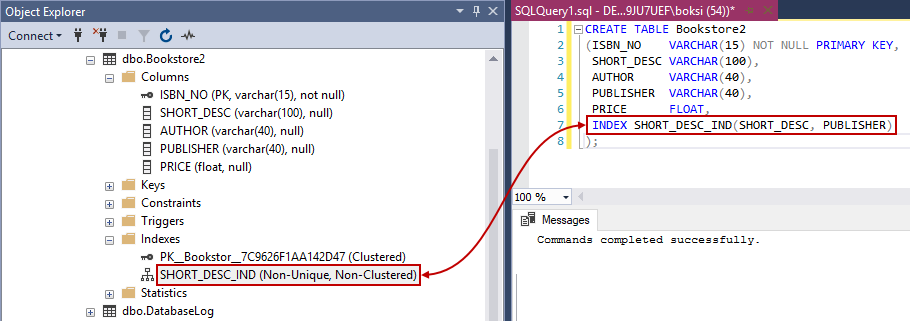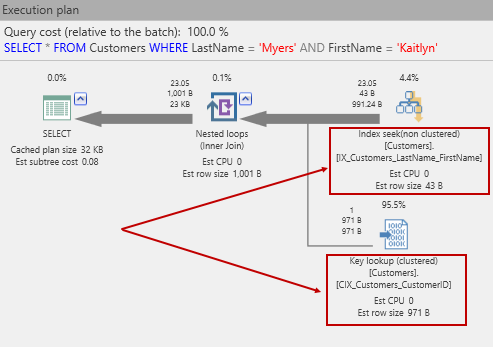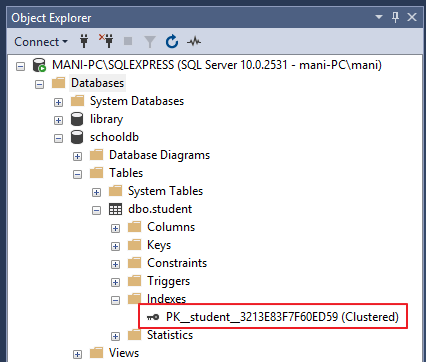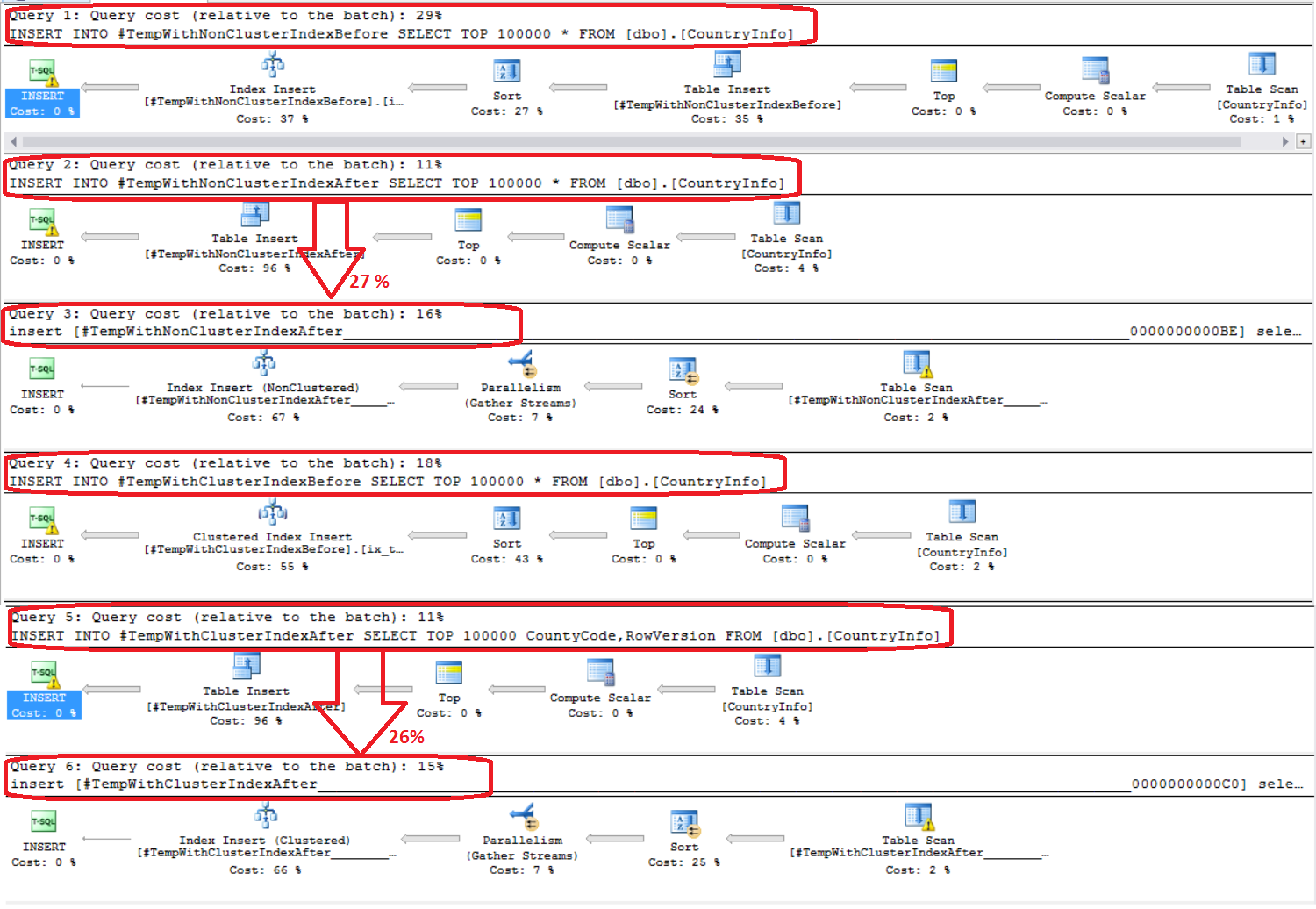The primary key will represent a clustered index while the unique constraint a non clustered index. In SQL Server 2000 - 2012 indexes on table variables can only be created implicitly by creating a UNIQUE or PRIMARY KEY constraint.

Importance Of Choosing Correct Bucket Count Of Hash Indexes On A Memory Optimized Table Optimization Relational Database Management System Sql Server
Set the fields Indexed property to Yes No duplicates You can do this by opening the table in Design view.

Unique index table variable. There are several ways to use SAS to get the unique values for a data variable. You can also use the DISTINCT function in PROC SQL to get the same information. Declare order table member_name varchar30 address varchar50 CREATE INDEX.
DECLARE UserId TABLE UserId INT NOT NULL INSERT UserId UserId VALUES 22656 SELECT pOwnerUserId COUNT AS Records FROM dboPosts AS p LEFT. Indexes and Stored Procedures. In the SASIML language you can use the UNIQUE function to find the.
I had these two queries. Create table temptable id int primary key clustered name varchar10 create nonclustered index IX_NC_name on temptable name asc. There are two basic ways that you can create a unique index.
Each created Non-Clustered Index has no Statistics Object attached to it. A unique index is an index that requires that each value of the indexed field is unique. SQL Server 2014 now supports a new T-SQL syntax that allows defining an index in the CREATE TABLE statement without having to issue separate CREATE INDEX statements.
The code below will get an error. The table variable is a special type of the local variable that helps to store data temporarily similar to the temp table in SQL Server. Therefore the optimizer will use a hard-coded estimation of 1 row returned from a table variable and so will tend to choose operators optimal for working with small data sets such as Nested Loops operator for joins.
With the new SQL 2014 syntax you will also have the option to create a non-unique clustered index on a table variable. Its top secret. A unique index consists of one or more fields that logically arrange all records in a table in a unique predefined order.
The only difference is the table variable definition. SQL temp tables support adding clustered and non-clustered indexes after the SQL Server temp table creation and implicitly by defining Primary key constraint or Unique Key constraint during the tables creation but table variables support only adding such indexes implicitly by defining Primary key constraint or Unique key constraint during tables creation. The CREATE UNIQUE INDEX command creates a unique index on a table no duplicate values allowed Indexes are used to retrieve data from the database very fast.
CREATE TABLE Test Column1 INT PRIMARY KEY CLUSTERED Column2 INT INDEX idx_Col2 Column3 INT INDEX idx_Col3 GO. The users cannot see the indexes they are just used to speed up searchesqueries. For table variables and their variants we have the new table index.
Creates a unique index on a table or view. Create Index on Table Variable Indexing Table variables in SQL Server Indexes on Table Variable Regards GVPrabu. If the index consists of one field values in that field must be unique for the entire table.
As you can see you are now able to create additional Non-Clustered indexes on the Table Variable. Even the indexes that enforce PRIMARY KEY and UNIQUE constraints on table variables do not have statistics. In Base SAS you can use the TABLES statement in PROC FREQ to generate a table of unique values and the counts.
Which are actually the same query twice. Database compare after restoring to the new server. In fact the table variable provides all the properties of the local variable but the local variables have some limitations unlike temp or regular tables.
Must declare the table variable in a stored procedure. Transact-SQL DECLARE IndexCreation TABLE i int j char10 k varchar100 index cxIndexCreation_i clustered i index ixIndexCreation_jk nonclustered jk. The difference between these constraint types are that the primary key must be on non nullable columns.
A unique index is one in which no two rows are permitted to have the same index key value. As youll be see youre currently able to produce additional Non-Clustered indexes on the Table Variable. You cannot create non-unique non-clustered indexes on table variables.
You can prevent duplicate values in a field in an Access table by creating a unique index. The Database Engine does not allow creating a unique index on columns that already include duplicate values whether or not IGNORE_DUP_KEY is set to ON. Its an awfully nice straightforward syntax that is additionally supported on normal database tables that you simply create.
Each created Non-Clustered Index has no Statistics Object adhered to it. In fact the UNIQUE attribute is also allowed on the index but Ive kept to the published version because although the UNIQUE keyword is accepted Im not certain whether it is implemented. Creating an index on a table variable can be done implicitly within the declaration of the table variable by defining a primary key and creating unique constraints.
How to create index in table variable. If you really want an index on that column then you would have to use temp tables instead. A clustered index on a view must be unique.
CREATE TABLE foo Col1 INT PRIMARY KEY CLUSTERED Col2 INT INDEX idx_Col2 Col3 INT INDEX. DECLARE TBL TABLE ID INT PRIMARY KEY FROMDATE DATETIME TODATE DATETIME UNIQUE NONCLUSTERED ID FROMDATE Check the following links. Need a Query to see which table need to be Rebuild Re organize and updates stats on SQL server 2000 database.
Why does Sql Server recommends creating an index when it already exist. Its a very nice easy syntax which is also supported on normal database tables that you create. Okay so its just embarrassing.
Lets have a look on the following table definition. The following SQL creates an index named uidx_pid on the PersonID column in the Persons table. Up to now the same could be achieved only with PRIMARY KEY and UNIQUE constraints thus allowing UNIQUE.

Excel Formula Get Column Name From Index In Table Exceljet

Minimal Logging With Insert Select Into Heap Tables Relational Database Management System Sql Server Relational Database

Sql Index Overview And Strategy

Php Array Fill Function Sorting Function Php

Indexing Sql Server Temporary Tables

Top 10 Questions And Answers About Sql Server Indexes

Expert Difference Between Binomial And Poisson Distribution With Table Poisson Distribution Gaussian Distribution Binomial Distribution

Memory Optimized Table Variable And Cardinality Estimate Cardinality Relational Database Management System Optimization

What Is The Difference Between Clustered And Non Clustered Indexes In Sql Server

Creating An Index Column For Power Bi Stack Overflow

How To Use The Excel Index Function Exceljet

Excel Formula Two Way Lookup With Index And Match Exceljet

Indexing Sql Server Temporary Tables

Indexing Sql Server Temporary Tables



